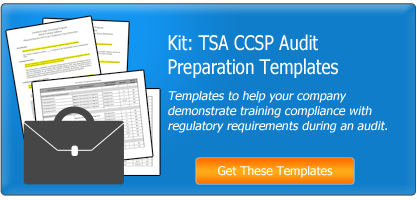 For those overseeing security training compliance of employees, there are a few things you must know at any given time. Don’t be caught off guard when an auditor inspects your facility and training records.
For those overseeing security training compliance of employees, there are a few things you must know at any given time. Don’t be caught off guard when an auditor inspects your facility and training records.
Make sure you understand these five key pieces of information related to your compliance training program. It will prepare you when a compliance audit is conducted.
1. Understand Your Training Program and Structure
It’s necessary to have an understanding of your overall training program and the major elements of it. This includes knowing what your training content consists of, what the pre-requisites of training are, and what the ongoing training expectations are. It is also important to understand how and when the most recent industry regulations and amendments are integrated into the training content. An auditor may ask about this and other questions about your overall training program.
2. Note Important Dates and Time Frames
Dates and time frames are an important part of training. When overseeing training, you must understand how often employees and third party contractors must complete training for the program they are enrolled in. Is training taken every six months? Is it taken on a yearly basis? Does training time frame depend on their role?
Take note of deadlines that employees cannot miss. If employees miss their deadline and are overdue for recurrent training, they must retake initial training which often includes more training content and takes longer to complete than refresher training.
3. Understand How To Prove Regulatory Compliance
 When an auditor inspects your training records, it is likely they will want to know exactly how your security training program complies with each specific regulation. Make sure you have a list of training objectives available to correlate with each point in the regulations. This way, you can pinpoint how regulations are satisfied within training.
When an auditor inspects your training records, it is likely they will want to know exactly how your security training program complies with each specific regulation. Make sure you have a list of training objectives available to correlate with each point in the regulations. This way, you can pinpoint how regulations are satisfied within training.
Safe Passage provides proof of compliance with syllabi and matrices. These documents have been successfully used by various clients during audits.
4. Know Where Archived Training Data Is Stored
Previous training records will most likely be archived. If an auditor asks for old training records and logs, make sure you know exactly where to go to retrieve them - whether electronically or in hard copy format. Everything should be in one spot and labeled clearly as records are archived so that they are easy to retrieve later on.
5. Be Able To Produce Tests & Certificates
It is highly likely that an auditor will want to inspect certain employees’ tests and certificates. If using a computer-based training system, be sure you understand how to produce the actual test taken by employees and how to pull training certificates from the system. Any hard copies of test and certificates should be stored in a safe place that is easily accessible. At minimum, certificates should have accompanying program name, employee names, dates, and signatures.
Conclusion
Overseeing a compliance training program is a significant undertaking. Be sure you have a general understanding of your program and are able to carry out the tasks above. You will certainly be better prepared for a compliance audit when the time comes. For additional tips on aviation and cargo security training audits, check out this previous blog post.

